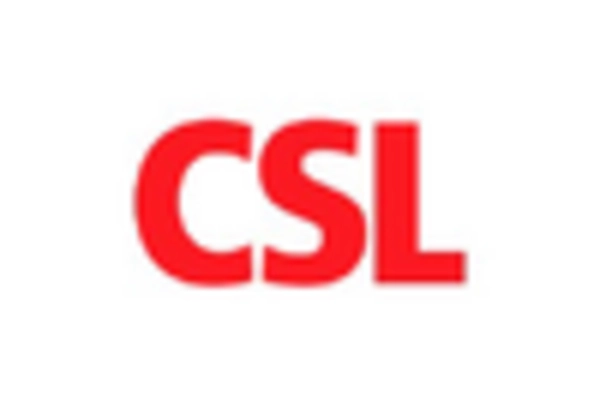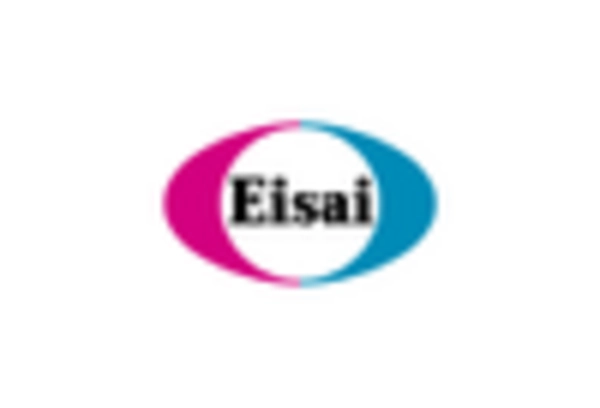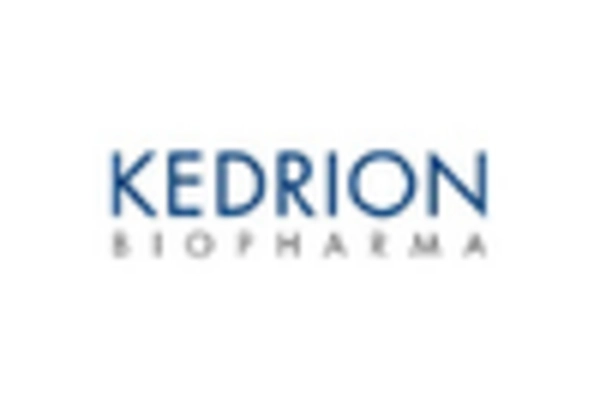Emerging Therapeutic Options
The emergence of novel therapeutic options for treating CJD is a significant driver for the creutzfeldt jakob-disease market. Recent clinical trials exploring new drug candidates and treatment modalities have shown promise in managing symptoms and potentially slowing disease progression. In the GCC, pharmaceutical companies are increasingly investing in research and development to bring these therapies to market. The anticipated approval of new treatments could lead to a surge in demand, as healthcare providers seek effective solutions for patients. This trend may result in a market expansion of approximately 5-8% as new therapies become available and gain acceptance among clinicians.
Advancements in Genetic Research
Recent advancements in genetic research related to prion diseases are expected to significantly impact the creutzfeldt jakob-disease market. Studies focusing on genetic predispositions to CJD have opened new avenues for understanding the disease's etiology. In the GCC, this research is likely to foster the development of targeted therapies and personalized medicine approaches. The potential for genetic testing to identify at-risk individuals may also lead to earlier interventions, thereby increasing the demand for diagnostic services and treatments. This trend could contribute to a market growth of around 6% over the next few years, as healthcare providers seek to implement these innovative solutions.
Increasing Awareness of Prion Diseases
The rising awareness of prion diseases, including Creutzfeldt Jakob Disease (CJD), is a crucial driver for the creutzfeldt jakob-disease market. Educational campaigns and healthcare initiatives in the GCC region have led to improved recognition of symptoms and early diagnosis. This heightened awareness is likely to result in increased patient referrals and consultations, thereby expanding the market. Furthermore, the GCC healthcare systems are increasingly prioritizing neurological disorders, which may lead to enhanced funding for research and treatment options. As a result, the market could experience a growth rate of approximately 5-7% annually, reflecting the growing recognition of CJD as a significant health concern.
Government Initiatives for Rare Disease Management
Government initiatives aimed at managing rare diseases, including CJD, are becoming increasingly prominent in the GCC. These initiatives often involve the establishment of specialized centers for rare disease research and treatment, which can enhance the infrastructure supporting the creutzfeldt jakob-disease market. Funding allocations for research and public health campaigns are likely to increase, thereby facilitating better access to care for affected individuals. Additionally, the establishment of registries for rare diseases may improve data collection and analysis, leading to more informed healthcare policies. Such efforts could potentially drive market growth by 4-6% as awareness and treatment options expand.
Collaboration Between Research Institutions and Healthcare Providers
Collaboration between research institutions and healthcare providers is fostering innovation in the creutzfeldt jakob-disease market. In the GCC, partnerships aimed at sharing knowledge and resources are likely to enhance the understanding of CJD and improve treatment protocols. These collaborations can lead to the development of clinical guidelines and best practices, which may standardize care and improve patient outcomes. Furthermore, joint research initiatives may attract funding and support from both public and private sectors, thereby accelerating advancements in the field. This collaborative approach could contribute to a market growth rate of 5-7%, as new insights and methodologies are integrated into clinical practice.

















Leave a Comment